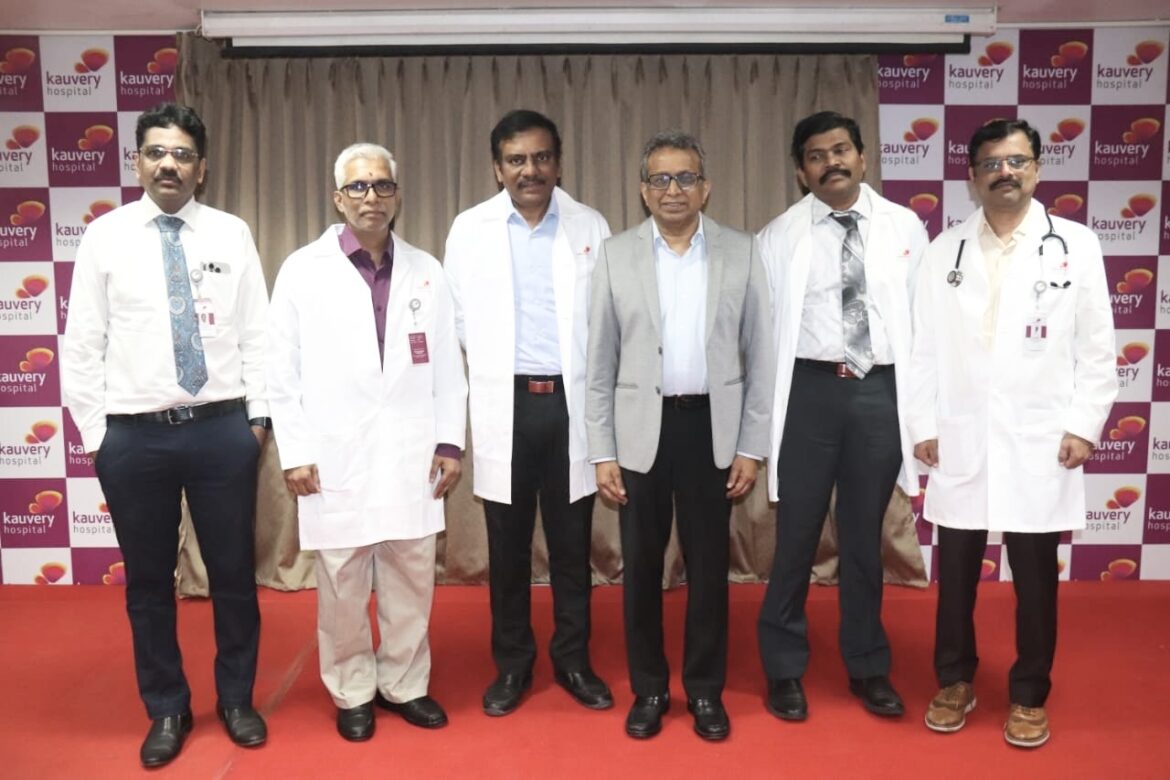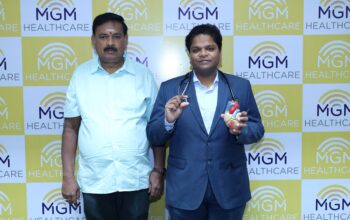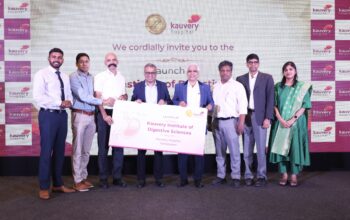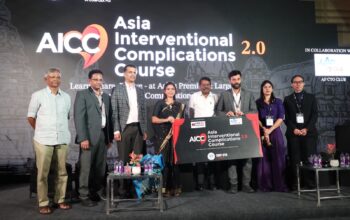Chennai, 8th January 2025: Kauvery Hospital Vadapalani is pleased to announce a series of remarkable achievements in its management of ST-Elevation Myocardial Infarction (STEMI) cases during December 2024. In December alone, the hospital treated 15 STEMI cases, averaging one case every alternate day, reinforcing Kauvery Hospital’s reputation as a leader in the management of critical heart attacks.
Among the key observations for December, Inferior Wall Myocardial Infarctions (IWMI) were found to be the dominant form of STEMI, with the Right Coronary Artery (RCA) identified as the primary culprit in 8 of the 15 cases. This seasonal trend, which has been consistently observed in previous years, highlights the increased incidence of IWMI cases during the winter months. Recognizing the heightened risk during this time, Kauvery Hospital remains vigilant, prepared, and responsive in delivering timely interventions for the best possible outcomes for patients.
A particularly notable achievement this month has been the improvement in Door-to-Balloon (D2B) time—the time taken from patient admission to angioplasty intervention. Kauvery Hospital has set a new benchmark with an impressive average D2B time of just 49 minutes, which is significantly shorter than International Standard time of 90 minutes . This achievement shows that providing swift, efficient, and life-saving treatment to STEMI patients, significantly reduces the time to reperfusion therapy, which is crucial for minimizing heart muscle damage and improving survival rates.
Primary angioplasty has been a cornerstone of Kauvery Hospital’s approach to heart attack management. Primary angioplasty, also known as percutaneous coronary intervention (PCI), is the gold-standard treatment for STEMI patients who present within the critical window after the onset of symptoms. Unlike thrombolytic therapy, which involves clot-busting medications, primary angioplasty aims to mechanically open up blocked coronary arteries by using a catheter and a balloon, followed by the placement of a stent to maintain the artery’s patency.
Kauvery Hospital’s angioplasty procedures have been supported by cutting-edge technology, including advanced imaging systems and high-quality stent technology, which have contributed significantly to faster recovery times and fewer complications for patients. The hospital has seen an impressive reduction in complications such as restenosis (re-narrowing of the artery) and stent thrombosis, thanks to the expertise of the medical team and its state-of-the-art equipment.
In India, survival rates for patients with STEMI vary significantly depending on the timeliness and type of treatment received. Hospital mortality for STEMI patients generally ranges from 5% to 15%, with better outcomes observed in urban hospitals equipped with advanced cardiac care facilities. Studies suggest that 90% of STEMI patients who undergo primary angioplasty survive at least one year, particularly when treatment is initiated within the critical first 90 minutes. In comparison, patients receiving thrombolysis, particularly those presenting later, have a hospital mortality rate of around 10% to 15%. Fast intervention times are crucial, with hospitals that manage to achieve Door-to-Balloon times under 60 minutes reporting a 5% reduction in mortality compared to those with longer intervention times.
Senior Cardiologists at Kauvery Hospital, has been instrumental in refining the hospital’s angioplasty protocols. Their efforts to streamline patient workflows and optimize angioplasty procedures have played a pivotal role in achieving the hospital’s impressive D2B times and ensuring better patient outcomes.
The hospital’s central location in Vadapalani is a unique selling point, providing quick access for emergency patients. This strategic positioning ensures that ambulances can reach the hospital promptly, crucial in heart attack cases where time is of the essence. This proximity allows Kauvery Hospital to provide 24/7 emergency services, so that patients can receive immediate care in their most critical moments.
Prof. P. Manokar, Senior Interventional Cardiologist and Clinical Lead for the Heart Failure & Transplant Program, remarked, “The improvement in our D2B time shows the efficiency of our entire team. Every second counts in the treatment of STEMI, and we have worked tirelessly to streamline our processes so that patients receive the best care without delay. Our ability to reduce D2B time to 49 minutes is a major milestone, and we will be continuing this momentum in providing the highest standard of cardiac care to all our patients.”
Additionally, Dr. Sundar C, Senior Consultant Interventional Cardiologist and Endovascular Specialist at Kauvery Hospital, shared, “The hospital’s infrastructure and our team’s round-the-clock availability of cardiology services, including intensive care, cath labs, and emergency cardiac intervention, make Kauvery Hospital a preferred choice for heart attack patients in Chennai. With our dedicated approach, we continue to lead in cardiac care and improving every patient’s journey towards recovery.”
Dr. Aravindan Selvaraj, Co-Founder and Executive Director, Kauvery Group of Hospitals, expressed his pride in the hospital’s achievements, saying, “Our team’s excellence is clearly reflected in these exceptional outcomes. The improvement in our D2B time is a direct result of the hard work and collaboration of our doctors, nurses, and support staff. It highlights our determination to deliver the fastest, most effective cardiac interventions and save lives when it matters most. We are proud of the strides we have made, and we will continue to set new standards in cardiac care.”
Kauvery Hospital Vadapalani aims at delivering the highest quality of care to patients, particularly those suffering from life-threatening cardiac conditions. The hospital’s promise to excellence in heart attack management is evident in its continuous focus on improving treatment times, leveraging advanced technology, and ensuring that patients receive the most effective interventions possible










